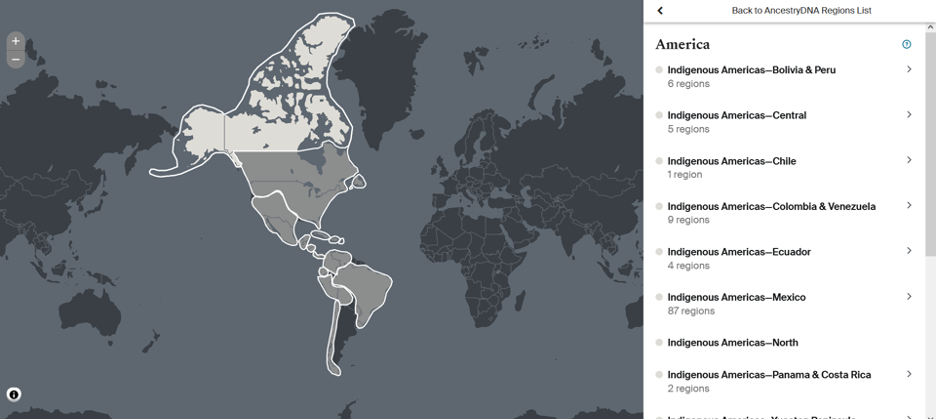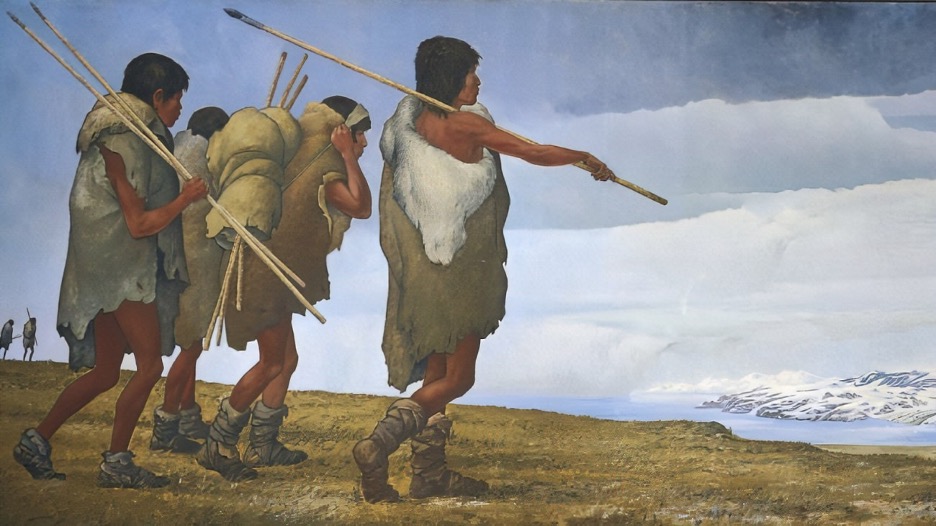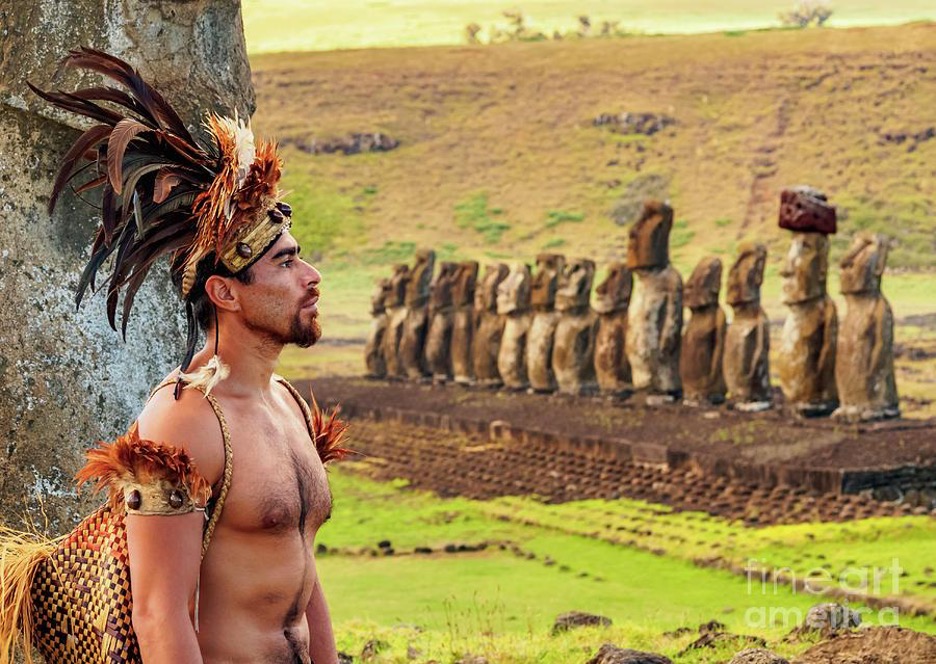What is Indigenous Americas on Ancestry DNA?
If you've recently done a DNA test and the result revealed "Indigenous Americas" as your ethnicity, you might wonder what that means. In this article we'll cover where this region is, the history of it, the genetic makeup of the region, and much more!
The long-awaited AncestryDNA ethnicity report results have finally hit your inbox and you’re excited to see the results. You might believe you have a good idea of what you are going to find but there can sometimes be surprises.
AncestryDNA is Our Top Recommendation
After reviewing all of the top DNA products on the market, nothing comes close to AncestryDNA to help you discover your whole family story!
They give you so much more than any other family tree DNA kit, and let you connect to the places you're from in the world where your family story started, and even help you to discover living relatives you never knew you had!
For the most accurate family history research based on your DNA, sign up for AncestryDNA now!
Get AncestryDNA →You may match multiple regions, some that are very simple to understand but what if you receive a match in the Indigenous Americas region? Well, you certainly wouldn’t be alone because there are over five million Americans who identify as Native American.
Additionally, there are over 50 million Americans with Hispanic or Latino heritage who have DNA from the Indigenous Americas region. In fact, the average person with this type of heritage has about 18% Indigenous DNA.
What then is the Indigenous America region? Who are the people that this DNA comes from? What does it mean to possess this result in your ethnicity? To answer all these questions and more, keep reading.
What Are the Indigenous Americas Regions?
The title question for this section is correct because rather than just one region there are actually multiple Indigenous American regions. In fact, as of March 2022, AncestryDNA recognizes a total of nine. This means that in your ethnicity results you should hopefully have a more specific region listed.
- Indigenous Americas – Central (Central America)
- Indigenous Americas – Chile (The country of Chile)
- Indigenous Americas – Colombia & Venezuela
- Indigenous Americas – Ecuador
- Indigenous Americas – Mexico
- Indigenous Americas – North (Most of the United States and Canada)
- Indigenous Americas – Panama & Costa Rica
- Indigenous Americas – Yucatan Peninsula
Within these nine Indigenous Americas regions, there are a further 118 sub-regions which would likely help pinpoint the origin of your ancestral native DNA.

There are also several other Indigenous regions that do not classify as being in the Americas but they are still connected to the same ancestral sources.
- Indigenous Arctic
- Indigenous Cuba
- Indigenous Eastern South America
- Indigenous Haiti & Dominican Republic
- Indigenous Puerto Rico
- Additional South American Communities
Anyone with DNA from the above regions is likely to have direct ancestors who descended from the original inhabitants of North and South America. There are several terms for these original peoples including Native Americans, Amerindians, First Nations, or Indigenous peoples.
History of Humans in the Americas
The Land Bridge:
Although there is no exact date for when humans first arrived in the Americas there are several prevailing theories. The most common one of course being the land bridge theory. During the last ice age between 19,000 – 8700 BC, sea levels were 100 feet below the modern-day. This was due to vast quantities of water being frozen in glacier form.
During that last ice age, the Bering sea as we know it today was actually a land bridge reaching all the way to Siberia. It is thought that around 14,000 years ago stone age hunters and gatherers followed game across this land bridge and became the first humans to settle within the Americas.

It is also believed that gradually these groups then headed deeper into the Americas, traveling south in small groups. Due to the ongoing effects of the ice age these groups remained small because conditions were not conducive with large settlements or nomadic tribes.

Today's Indigenous peoples likely descend from a now-vanished ancient group known as the Paleo-Siberians. In DNA testing Indigenous Americas DNA has little in common with modern-day Siberians but in 2019 a 10,000 year old skeleton found in Siberia did show notable similarities to modern-day Native peoples in the Americas.
Traveling by Sea:
There exist several theories whereby early indigenous people of the Americas may have interacted and bred with oceanic explorers prior to the arrival of Columbus. In DNA tests taken of inhabitants of Rapa Nui (Easter Island), these people showed small sections of Native American DNA.

Easter Island is over 2000 miles away from the closest contact with the Americas which would be the coast of Chile. The DNA suggests that these Easter Islanders had a Native American Ancestor from around 1280 – 1495 A.D. It is therefore likely these seafaring Polynesians made the trip to the Americas some may have stayed.
Recent archaeological evidence also indicates that Vikings were present in the United States around the 11th century A.D. It is reasonable to assume there would be a possibility that some may have settled and assimilated into local tribes.
How Did You Inherit Indigenous American DNA?
It is important to note that due to the small number of original humans that likely crossed the land bridge and thousands of years of isolation, Indigenous DNA is very distinct.
As mentioned many individuals from South and Central America may have some Indigenous DNA based on intermarriage between early Spanish settlers and local native groups. Interactions between the tribes of North America and the incoming European settlers also led to intermarriage.
Depending on how high your percentage of Indigenous American DNA is, its origins can vary. If you have a high percentage you may have a recent ancestor who was 100% Indigenous. Often if this is the case you would likely have some idea of this.
In lower percentages of Native DNA, it might be an indication of a more distant unknown indigenous ancestor. In order to discover this connection, you may have to do some deep research to try and pinpoint at what point that DNA entered your family tree.
Can You Pinpoint the Location of Your Indigenous Ancestors
As mentioned Ancestry has over 100 different indigenous sub-regions which means if your percentage of DNA is high enough you might get a more localized result. If, for example, you get a result indicating the Andean North region which is in Columbia you may have an ancestor from the border region of northwest Columbia and western Venezuela.
The best way to confirm that an indigenous ancestor came from a certain region of course is to do more research. In knowing where to look you can focus your research in that area and maybe even trace who that ancestor was.
What if You Were Not Born in the Americas?
Some people often think that immigration to the Americas was a one-way street. The truth is people sometimes did move to the New World but did not always stay there. It was not uncommon to go to the Americas, start a family and many years later return to Europe.
If you are European and have a result that includes Indigenous Americas then you likely have an ancestor who spent some time there. It may not be common knowledge that a distant ancestor lived in the Americas but some digging may help discover who that might have been.
Can DNA Tell You a Specific Tribe You Descend From?
Sadly the answer to this question is no, DNA cannot attribute your ancestry to a specific tribal group. As mentioned it may help you focus your research on a region but due to the often nomadic lifestyle of tribes, there was often a lot of overlap in territories.
Even if DNA could name the tribe your ancestor may have belonged to this would not qualify as proof for membership into a specific tribe. The only possible way to determine specific tribal affiliation is to try and find a paper trail back to your full-blooded indigenous ancestor.
Conclusion
The Indigenous Americas region covers a vast area of two huge continents, North and South America. It is broken down into over 100 different sub-regions. The people who have DNA from these regions have a familial connection to the original human inhabitants of the Americas.
It is likely that indigenous peoples descended from a now disappeared ancient tribe from Siberia in modern-day Russia. These Indigenous people grew to carry and foster a proud and fascinating culture and have persevered in the face of historical adversity.
Link To or Reference This Page
We spent a lot of time downloading, cleaning, merging, and formatting the data that is shown on the site.
If you found the data or information on this page useful in your research, please use the tool below to properly cite or reference Name Census as the source. We appreciate your support!
-
<a href="https://namecensus.com/blog/what-is-indigenous-americas-on-ancestry/">What is Indigenous Americas on Ancestry DNA?</a>
-
"What is Indigenous Americas on Ancestry DNA?". NameCensus.com. Accessed on April 26, 2024. https://namecensus.com/blog/what-is-indigenous-americas-on-ancestry/.
-
"What is Indigenous Americas on Ancestry DNA?". NameCensus.com, https://namecensus.com/blog/what-is-indigenous-americas-on-ancestry/. Accessed 26 April, 2024
-
What is Indigenous Americas on Ancestry DNA?. NameCensus.com. Retrieved from https://namecensus.com/blog/what-is-indigenous-americas-on-ancestry/.
